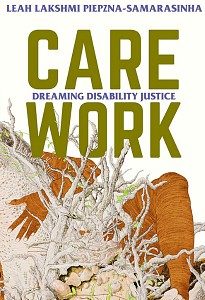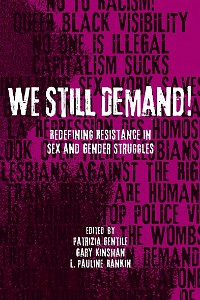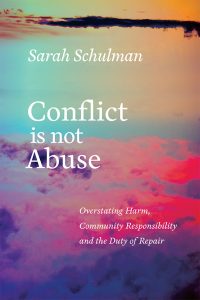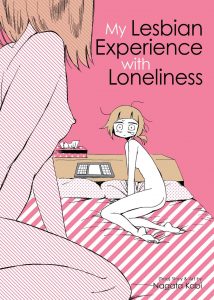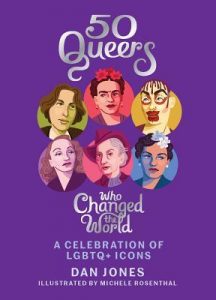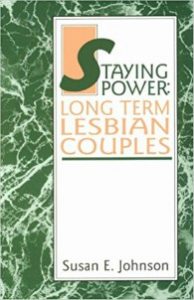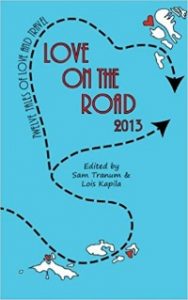This is a book that I will be processing for a long time. It is beyond almost anything I’ve read before. I’m not proud to say that I have very little knowledge around ableism and disability activism, which is part of why I picked up Care Work (The other being that Bodymap, Piepzna-Samarasinha’s book of poetry, is one of the best books I’ve ever read.) This work is about disability justice: disability activism that centres queer and trans black, indigenous, and people of colour. It encourages leadership by the most impacted, people who are experts in ableism and the other interlocking oppressions that they live with every day, and who have spent years fighting a system that works against them. Disability justice sees ableism as intertwined with colonialism, capitalism, heteropatriarchy and all of the others ways that bodies are policed and evaluated.
I am having trouble writing this review, because there is so much here to think about. I will muddle through and share some highlights, but I definitely recommend picking this up for yourself.
Care Work is a collection of essays, and it’s packed full of ideas, ranging from theory, history, memoir, advice and tips, and more–that I have to stop frequently to digest it. Here are just a few ideas that really stopped me in my tracks and made me think:
- Piepzna-Samarasinha refers often to her “bodymind,” which seem to relate the mind as part of the body, an integrated whole–it reminded me of The Body Is Not an Apology, which discusses how policing of the body is a commonality of many types of oppression, including ableism against neurodivergent people.
- The concept of “crip doulas” to guide disabled people into the community and share resources and tips for navigating the system. This is such a powerful idea, and I see the echo of it in queer communities, where many people would have loved to have a queer elder to provide wisdom in navigating their new identities. This is a beautiful vision of a future where interdependence is celebrated, and community is guaranteed.
- Care Work talks about Octavia Butler’s books as disability justice narrative, which really made me think about that story in a new light.
- I love the idea of “prefigurative politics:” acting as if the revolution has already happened. . Spending more time building than attacking, and focusing on power and not powerlessness. I think this is a powerful idea in activism, to not spend all of our time and energy criticizing a terrible system, and instead using some of those resources to build our own networks.
- I was intrigued by the way that parents are talked about in this text, as not being directly targeted by ableism, but being restricted by much of the same system. Disability justice includes accessibility not just for neurodivergent and disabled people, but also for parents (by making sure that child care is provided).
- A quotation by Qwo-Li Driskill, which says that one way ableism works is that disabled people “are not even present within the imaginations of a supposedly radical future,” really stuck with me.
- Care Work does not present a monolith of ideas or opinions. Although these are all essays by Piepzna-Samarasinha, she pulls in works and ideas from other disability justice activists, and details differences in opinions. For instance, she advocates for strong personal networks of care while also recognizing the difficulties in maintaining them, and mentions a friend of hers who explains not wanting to rely on a personal network because she doesn’t want to have to be well-liked in order to use the washroom.
Reading Care Work required me to sit with some discomfort, because it helped me to face my own ableism and try to confront that. It reminded me in how many careless, thoughtless ways I prioritize abled people and fail to consider people whose bodyminds differ from my own. When I came across a mention of the “ugly laws” and looked into them, I was appalled that I had never heard of them, which from the mid-1700s to the 1970s across the United States and other cities and countries around the world made illegal “any person, who is diseased, maimed, mutilated or deformed in any way, so as to be an unsightly or disgusting object, to expose himself to public view.” This such an obvious and horrific injustice–to dictate which bodies are allowed to be seen in public life–that it is a profound statement to me of how much I have to learn when I didn’t know this basic, crucial piece of history. I am angry at myself for not learning this, but I am also angry that this was never taught to me in my education.
Another takeaway I have from this book is how much disability justice is fighting a world that would be better for every single person. Piepzna-Samarasinha’s love letter to femmes made me think about how everyone should live in a world where we can feel safe and valued no matter what. It made me think of Elana Dykewomon’s quotation:
Almost every womon I have ever met has a secret belief that she is just on the edge of madness, that there is some deep, crazy part within her, that she must be on guard constantly against ‘losing control’ — of her temper, of her appetite, of her sexuality, of her feelings, of her ambition, of her secret fantasies, of her mind.
It made me think of how that fear is driven by the way we treat the “mad” or “crazy.” About how Piepzna-Samarasinha refers to the “not(yet)-disabled.” I think about all the disabled and neurodivergent people who are being prevented from living their lives, through denial to care and inaccessibility and stigma. And also those people who don’t have a label for who they are, or who hide that idea even from themselves. And the people who are constantly afraid that they are “crazy” or not enough or too much, and that if they are found out they won’t be loved or valued or supported. Disability justice doesn’t have to benefit abled people to be worth supporting, of course, but I am inspired by this movement that is fighting tooth and nail to try to inch towards the future we all should be aspiring to, and am infuriated by the system that counters them at every turn.
In case it isn’t already obvious, this is a powerful, brilliant book. I can imagine it would be life-changing for so many people, and even if it isn’t directly applicable to your own experience, I highly recommend giving it a try and absorbing what you can. I’m grateful that Care Work exists, and I’ll be thinking about it for a long time.

